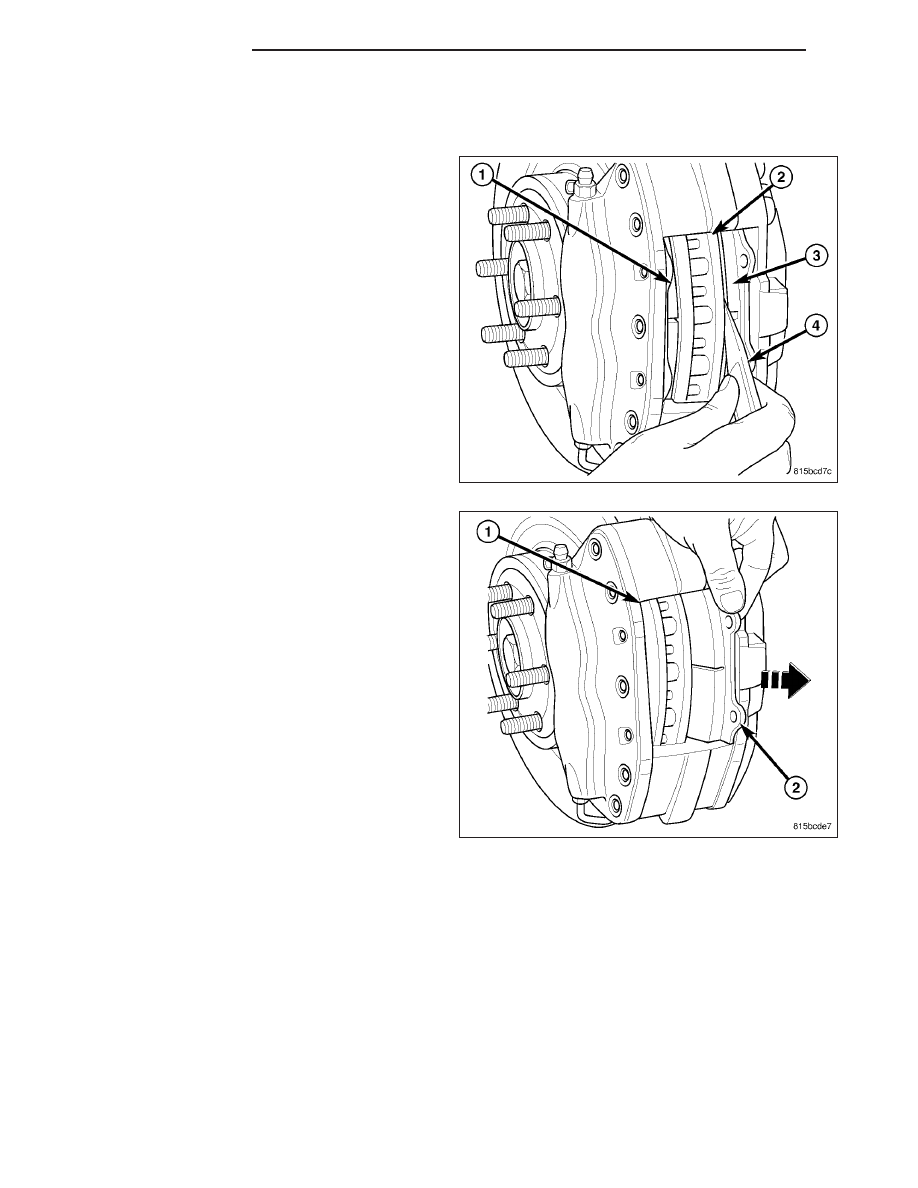Chrysler 300/300 Touring/300C, Dodge Magnum. Manual - part 147

CAUTION: When pushing pistons back into caliper bores, if hand pressure is not sufficient, use only a trim
stick as shown or other suitable soft tool to do so. Never use a screwdriver or other metal pry bar due to
potential damage to braking surface of rotor or pads.
6. Using hand pressure, pull pads back to seat caliper
pistons into bores if possible. If not possible, per-
form the following to do this correctly without dam-
aging the caliper, pistons, dust boots or brake rotor
disc.
a. Place trim stick (3) between inboard brake pad
and outer edge of rotor (1).
b. Using trim stick (3), apply pressure against the
inboard brake pad until both pistons are com-
pletely bottomed in bores of inboard caliper
half. Leave trim stick in place to hold pistons in
place.
c. Place second trim stick between outboard
brake pad and rotor, then repeat above step on
outboard pad and pistons.
7. Remove inboard brake pad (2) through opening in
caliper (1). Remove outboard brake pad in same
manner.
5 - 30
BRAKES - BASE
LX